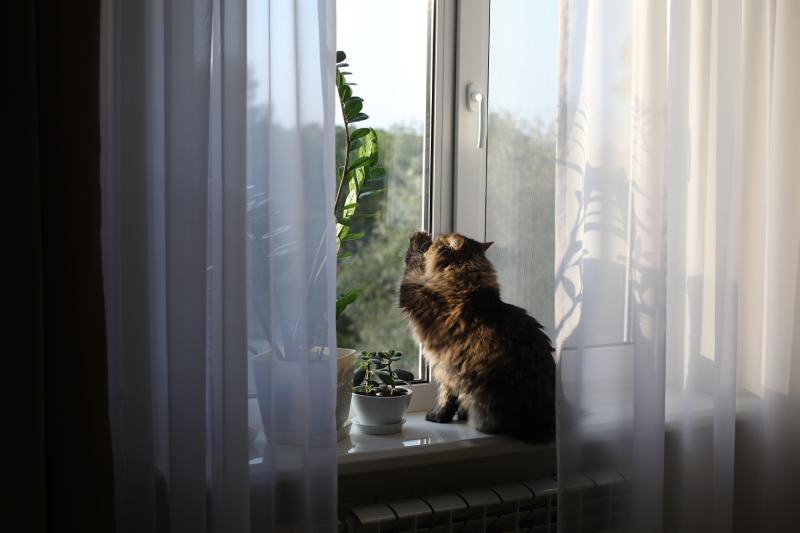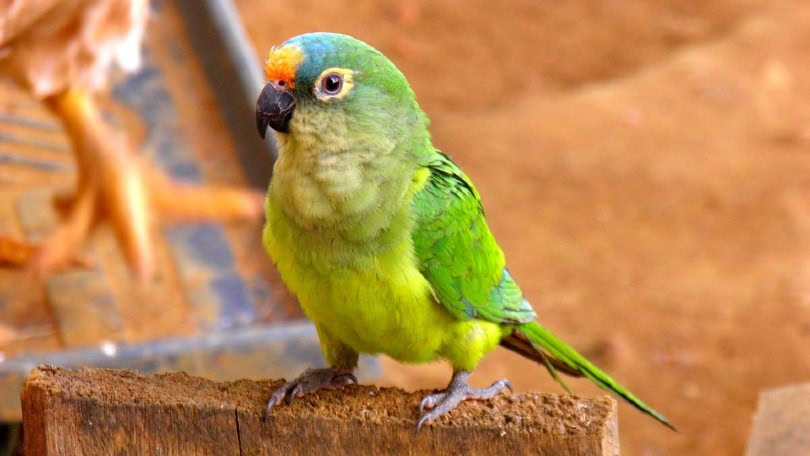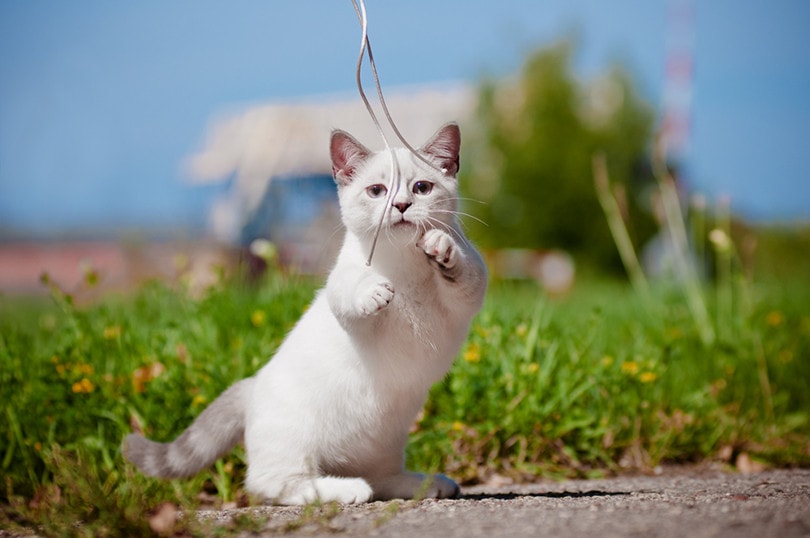VET APPROVED

The information is current and up-to-date in accordance with the latest veterinarian research.
Learn more »Click to Skip Ahead
We’ve all been there—one moment, your cat is luxuriating in a sunny spot by the window, and the next, seemingly out of nowhere, they’re scratching at it like a massive salmon on a plate has magicked its way to your yard.
This behavior can be perplexing and, if it happens while you’re sleeping or trying to work, very frustrating. In this post, we’ll explore the most likely reasons your cat is scratching at the window and how to stop it.

The 7 Reasons Your Cat Scratches at the Window
1. Hunting Instincts
Though the magic salmon analogy isn’t very likely, there are a multitude of creatures that could be on the other side of that window, exciting your cat’s hunting instincts. This could be a bird, a mouse, or even a tiny bug climbing up the outside window. The very fact that your cat is forever barred from their target can send them into a frenzy, taking out their frustration on the offending barrier.
If your cat is scratching the window because some sort of prey is outside, their tail may be upright and quivering, the pupils dilated, and they could be making chattering sounds.
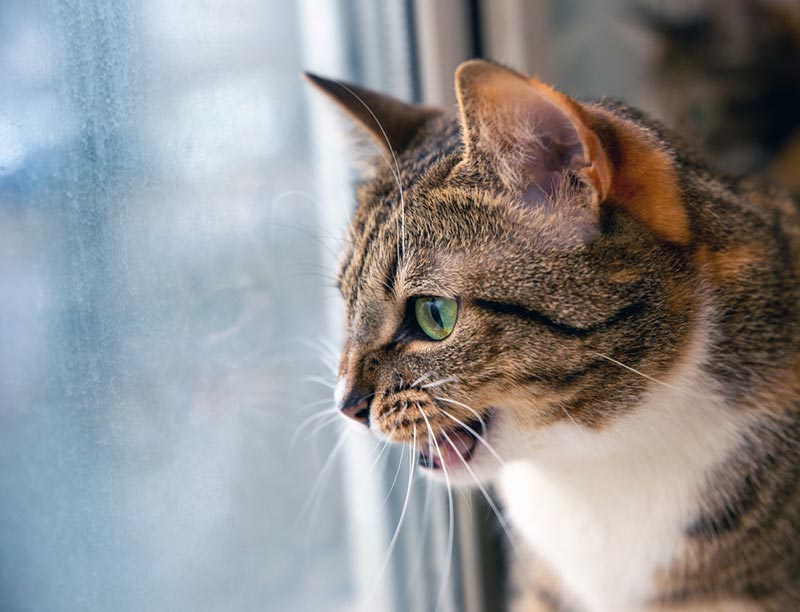
2. Defensive Behavior
Your cat may scratch at the window if they feel threatened by something on the other side, like another cat. Cats are very territorial animals, so the sudden appearance of another cat, dog, or potential predator could stress them out and send them straight into defense mode.
3. Desire to Mate
If your unspayed female cat is in heat, she may be feeling a strong urge to roam and find a mate. Likewise, an unneutered male cat may have the desire to roam for the same purpose. This may cause them to scratch at the window or door in an attempt to get out.
Being indoor-only is much safer for cats in general due to the risk of traffic accidents, predators, infectious feline diseases, and getting lost, but it’s also especially important for unspayed or unneutered cats to avoid unwanted pregnancies and, therefore, potentially more cats that end up homeless or in shelters.
4. Boredom
Bored cats tend to behave destructively or in ways that will attract your attention, like scratching at something or vocalizing loudly. To prevent this behavior, have daily play sessions with your cat to exercise and mentally stimulate them. You can also provide mentally stimulating toys, like an obstacle or puzzle feeder that requires the cat to figure out how to get to the treats inside.
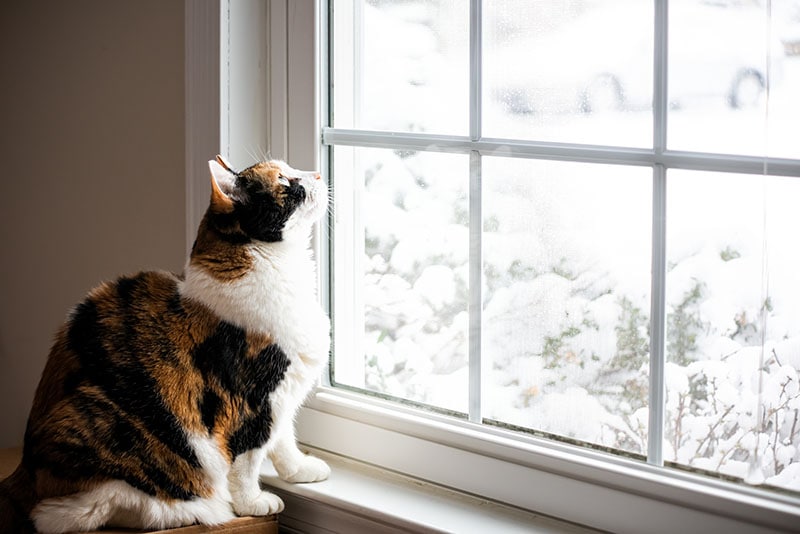
5. Marking Territory
Cats have scent glands in their paws that release pheromones when they scratch, marking their territory and signaling ownership to other cats. If your cat frequently scratches at the window, they may be trying to claim their favorite spot—especially if other cats tend to hang around on the other side.
6. Reflection
Sometimes, cats see their reflection but don’t realize that it’s their own and mistake it for another cat after a piece of their territory. This can overexcite them or make them defensive, causing them to scratch at the window as a way of marking it or to “defend” themselves from the perceived threat.
7. Desire to Play
Perhaps your cat isn’t threatened by other cats on the outside at all and simply wants to play with them! If your neighbor’s cat likes to pop over every now and again and your cat is familiar with them, your cat may scratch the window in an attempt to play or get to the other cat.
Other signs your cat is fond of the cat on the outside include a relaxed body posture, rubbing against the window, and purring. Your cat may also roll onto their back to expose their belly, which is a sure sign of trust.


How to Stop a Cat from Scratching the Window
If the scratching behavior only happens now and then, it shouldn’t cause you too much strife. However, if it’s disturbing your sleep or bothering you in some way, this is when it becomes a problem. Here are some things you can try:
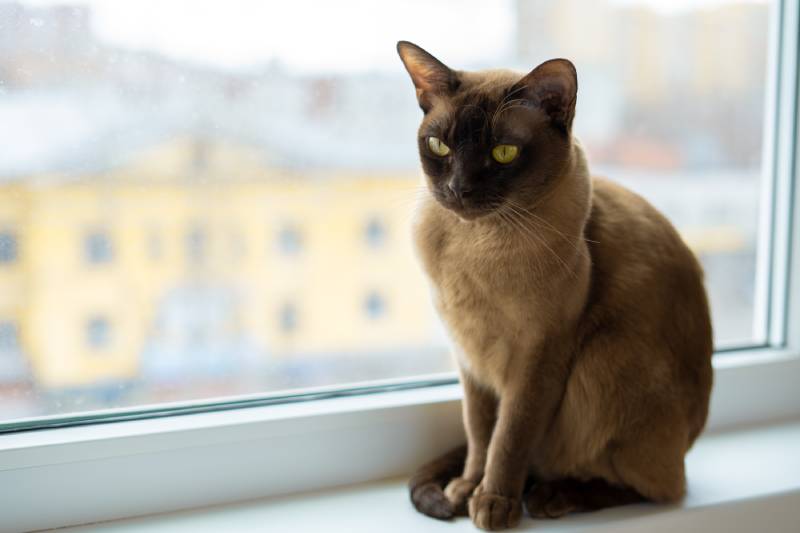
Exercise Your Cat
Insufficient physical exercise or mental stimulation might be behind the scratching behavior, especially if it happens a lot. Incorporate a few interactive play sessions into your daily routine and make sure your cat has something to do when they’re in an active mood, like working out a puzzle feeder or playing with another fun toy.
Spay or Neuter
If your unspayed or unneutered cat is scratching at the window, this may come down to their desire to roam. Consider spaying (for females) or neutering (for males), as this can lessen the roaming urges.
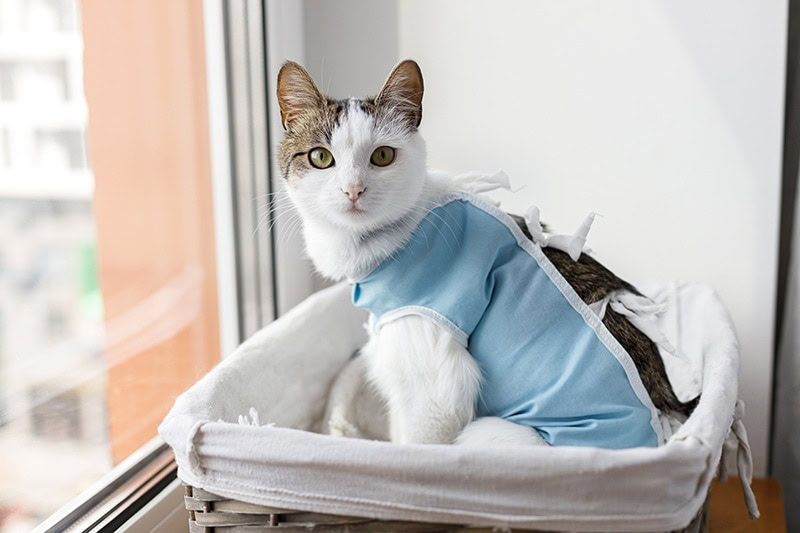
Provide Alternatives
Try placing a cat tree with scratch posts next to the window so your cat can redirect their scratching urges onto that. All cats should have something to scratch, as this is a natural and important behavior for them. Having an appropriate outlet for their urges may help deter them from scratching inappropriate objects.
The Hepper Hi-Lo Cat Scratcher features a modern and clever design that offers cats an appealing place to scratch – and a way to keep them from scratching all the things they shouldn't. Unlike most cat toys (where your cat probably just prefers the cardboard box they came in), cat's flock to this design ... maybe it's because there's cardboard in it!
- Premium Materials - Hepper's cardboard scratcher is made with dense, B-flute cardboard, and a metal...
- High, Low and Lower - A single cat scratch pad won't keep your cat engaged. 3 unique positions keeps...
- Activates Muscles - The Hi Lo isn't just a cat nail file to stop the chief cat couch scratcher. The...
With its 3-position setup, textured cardboard, and sturdy frame, it encourages their natural scratching behavior, steering them away from clawing at items like furniture, walls, carpets, curtains, and people. The Hi-Lo is a reliable solution to safeguard your home and create a more enjoyable environment for your cat, all while looking modern and stylish.
At PangoVet, we've admired Hepper for many years, and decided to take a controlling ownership interest so that we could benefit from the outstanding designs of this cool cat company!
Beforehand, you might want to thoroughly clean the window to get the cat’s scent off, as this allows them to start afresh with their new alternative. If they try to go for the window, gently redirect them to the scratch post. Praise and reward them if they use it.
Avoid grabbing your cat’s paws and forcing them to scratch the post, as this will scare them and create negative associations with it.
Deter Your Cat
As a last resource, if you need to deter your cat from scratching at the window, you can put aluminum foil around the window edges, as they often hate the sound and feel of this material. However, if your cat is more interested in the glass itself, this might not work. An alternative, but not ideal, is to use a humane, pet-safe cat repellant spray on the area (never on your cat).
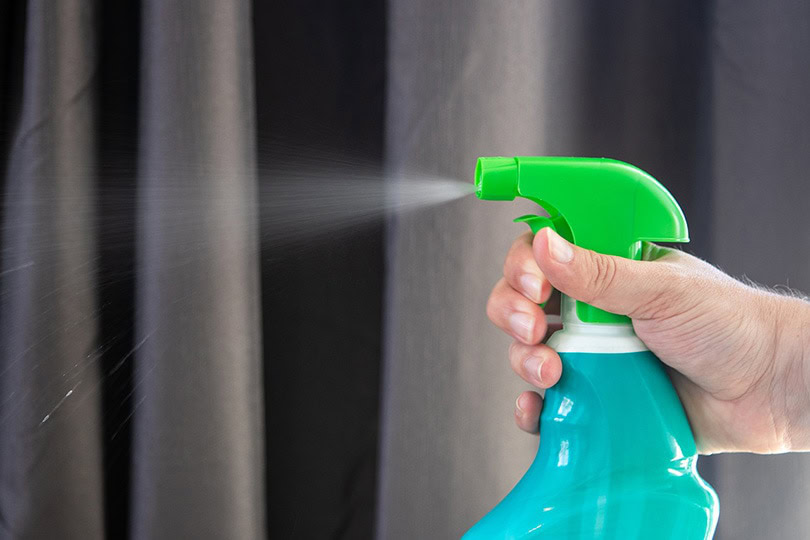

Conclusion
Though a window-scratching habit can be puzzling and sometimes frustrating, your cat isn’t doing it out of spite. Usually, it comes down to their prey drive, mating instincts, or need for more physical and mental stimulation. The good news is that with a few simple changes to enrich their environment, you can help reduce this behavior and ensure a happier, more content kitty at home.
If nothing works and the scratching doesn’t stop, it might be best to reach out to your vet or a professional feline behaviorist.
- https://www.americanhumane.org/fact-sheet/indoor-cats-vs-outdoor-cats/
- https://www.animalleague.org/get-involved/spay-usa/benefits-spaying-or-neutering-pets/
- https://www.humanesociety.org/resources/how-stop-cats-destructive-scratching
- https://www.travelingwithyourcat.com/why-do-cats-scratch-windows-clues-about-this-odd-feline-behavior/
Featured Image Credit: Yuliia Bezuglaya, Shutterstock
